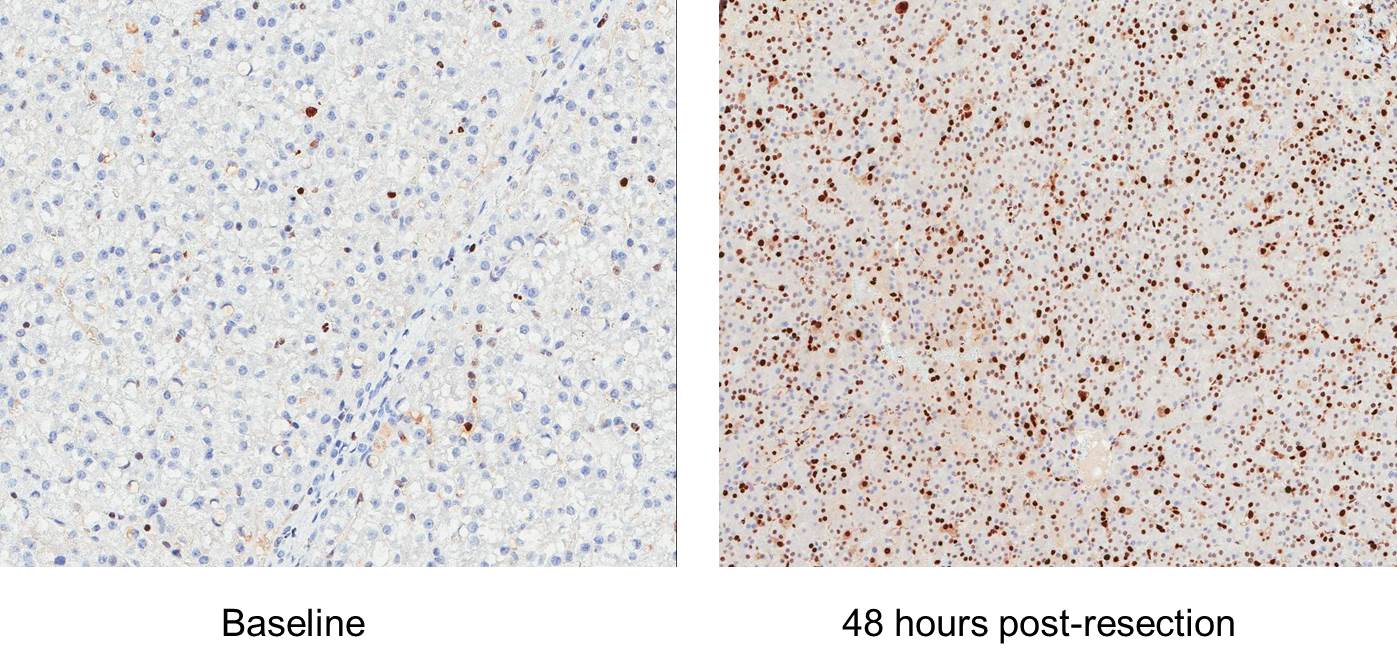Liver Regeneration in Porcine Hepatectomy Model.
Department of Transplantation Surgery, Mayo Clinic, Rochester, MN
Meeting: 2017 American Transplant Congress
Abstract number: A172
Keywords: Bioartificial livers, Liver failure, Survival
Session Information
Session Name: Poster Session A: Ischemic Injury and Organ Preservation Session I
Session Type: Poster Session
Date: Saturday, April 29, 2017
Session Time: 5:30pm-7:30pm
 Presentation Time: 5:30pm-7:30pm
Presentation Time: 5:30pm-7:30pm
Location: Hall D1
Background: Acute Liver Failure (ALF) is a serious condition. A substantial number of donor livers (10%) are used to save ALF patients. Supportive therapies such as (bio)artificial liver systems have been developed to bridge these patients while their native livers recover, so liver transplantation can be avoided.
Methods: Animals used in this study were healthy and 20-30kg female large white swine. First, an intracranial pressure (ICP) probe was placed for post-resection monitoring. One week later, extended left hepatectomy with less than 500mL estimated blood loss was performed. Goal was to resect more than 80% of pre-operative volume. Volume resected was confirmed by pre- and post-operative CT volumetric. Primary end point was survival to 90 hours after hepatectomy. Death equivalent was defined as grade IV hepatic encephalopathy (HE) or ICP >20 with inability to maintain sternal posture. Degree of liver regeneration was measured by CT volumetric at 48 hour, one week, and two weeks post-hepatectomy, and Ki-67 staining on histology.
Results: Nineteen animals were studied. Overall mortality rate was 47% at 90-hour with standard medical treatment. Percent liver volume resected was predictive of 90-hour survival. Greater than 85% volume resection results in 100% 90-hour mortality (n=5, p=0.004).  Peak ammonia and ICP were higher in the non-survivor group (p<0.004). Elevated ammonia correlates significantly with ICP and clinical findings of cerebral edema. Ki-67 showed three-fold increase in positive nuclear staining at 48 hours (p<0.03), and returned to baseline at 2 weeks.
Peak ammonia and ICP were higher in the non-survivor group (p<0.004). Elevated ammonia correlates significantly with ICP and clinical findings of cerebral edema. Ki-67 showed three-fold increase in positive nuclear staining at 48 hours (p<0.03), and returned to baseline at 2 weeks.  Conclusions: This recovery model of post-resection acute liver failure showed 100% mortality with >85% volume resection with standard medical management. This model is now being used to investigate the efficacy of Mayo Spheroid Reservoir Bioartificial Liver Support System.
Conclusions: This recovery model of post-resection acute liver failure showed 100% mortality with >85% volume resection with standard medical management. This model is now being used to investigate the efficacy of Mayo Spheroid Reservoir Bioartificial Liver Support System.
CITATION INFORMATION: Chen H, Joo D, Shaheen M, Yang J, Nyberg S. Liver Regeneration in Porcine Hepatectomy Model. Am J Transplant. 2017;17 (suppl 3).
To cite this abstract in AMA style:
Chen H, Joo D, Shaheen M, Yang J, Nyberg S. Liver Regeneration in Porcine Hepatectomy Model. [abstract]. Am J Transplant. 2017; 17 (suppl 3). https://atcmeetingabstracts.com/abstract/liver-regeneration-in-porcine-hepatectomy-model/. Accessed July 5, 2025.« Back to 2017 American Transplant Congress
